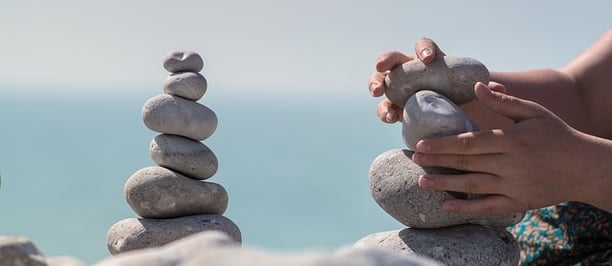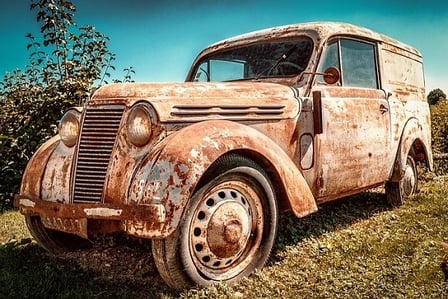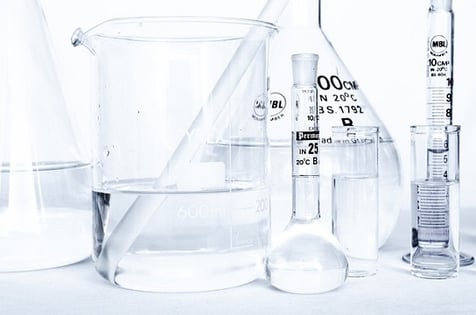The Definition of Equilibrium in Biology
Dynamic equilibrium is an important concept in chemistry. But what is dynamic equilibrium exactly? How can something be dynamic but also at equilibrium? Keep reading to learn the best dynamic equilibrium definition, common dynamic equilibrium examples, and how dynamic and static equilibrium may look the same but are in fact very different. Chemical reactions can either go in both directions (forward and reverse) or only in one direction. The ones that go in two directions are known as reversible reactions, and you can identify them by the arrows going in two directions, like the example below. H2O(l) ⇌ H+(aq) + OH - (aq) Dynamic equilibrium only occurs in reversible reactions, and it's when the rate of the forward reaction is equal to the rate of the reverse reaction. These equations are dynamic because the forward and reverse reactions are still occurring, but the two rates are equal and unchanging, so they're also at equilibrium. Dynamic equilibrium is an example of a system in a steady state. This means the variables in the equation are unchanging over time (since the rates of reaction are equal). If you look at a reaction in dynamic equilibrium, it'll look like nothing is happening since the concentrations of each substance stay constant. However, reactions are actually continuously occurring. Dynamic equilibrium doesn't just occur in chemistry labs though; you've witnessed an dynamic equilibrium example every time you've had a soda. In a sealed bottle of soda, carbon dioxide is present in both the liquid/aqueous phase and the gaseous phase (bubbles). The two phases of carbon dioxide are in dynamic equilibrium inside the sealed soda bottle since the gaseous carbon dioxide is dissolving into the liquid form at the same rate that the liquid form of carbon dioxide is being converted back to its gaseous form. The equation looks like this: CO2 (g) ⇌ C O2 (aq). Changing the temperature, pressure, or concentration of a reaction can shift the equilibrium of an equation and knock it out of dynamic equilibrium. This is why, if you open a soda can and leave it out for a long time, eventually it'll become "flat" and there will be no more bubbles. This is because the soda can is no longer a closed system and the carbon dioxide can interact with the atmosphere. This moves it out of dynamic equilibrium and releases the gaseous form of carbon dioxide until there are no more bubbles. Any reaction will be in dynamic equilibrium if it's reversible and the rates of the forward and reverse reactions are equal. For example, say that you prepare a solution that is saturated with an aqueous solution of NaCl. If you then add solid crystals of NaCl, the NaCl will be simultaneously dissolving and recrystallizing within the solution. The reaction, NaCl(s) ⇌ Na+(aq) + Cl - (aq), will be in dynamic equilibrium when the rate of the dissolution of the NaCl equals the rate of recrystallization. Another example of dynamic equilibrium isNO2 (g) + CO(g) ⇌ NO(g) + CO2 (g) (again, as long as the two rates are equal). Nitrogen dioxide (NO2 ) reacts with carbon monoxide (CO) to form nitrogen oxide (NO) and carbon dioxide (CO2 ), and, in the reverse reaction, nitrogen oxide and carbon dioxide react to form nitrogen dioxide and carbon monoxide. If you're observing a reaction, you can tell it's not at dynamic equilibrium if you can see changes occurring in the amounts of reactants or products. (If you can't see any changes, that doesn't guarantee it's at dynamic equilibrium, since it may be at static equilibrium or the changes may be too small to see with the naked eye.) An example of an equation that could never be at dynamic equilibrium is: 4 Fe(s) + 6 H 2 O(l) + 3O2(g) → 4 Fe(OH) 3 (s). This is an equation for the formation of rust. We can see that it'll never be in dynamic equilibrium because the arrow for the reaction only goes one way (which is why a rusty car won't become shiny again on its own). There's no dynamic equilibrium for this car! If you observe reactions at dynamic equilibrium and reactions at static equilibrium, neither will have visible changes occurring, and it'll look like nothing is happening. However, reactions at static equilibrium are actually very different from those at dynamic equilibrium. Static equilibrium (also known as mechanical equilibrium) is when the reaction has stopped and there is no movement at all between the reactants and products. The reaction is complete and the forward and reverse reaction rates are both 0. While reactions at dynamic equilibrium are reversible (can proceed in either direction), those at static equilibrium are irreversible and can only proceed in one direction.However, both dynamic equilibrium and static equilibrium are examples of systems at steady state, in which the net force action on the systems is zero. Below is a chart showing the key differences between dynamic and static equilibrium. Dynamic Equilibrium Static Equilibrium Reversible Irreversible Reaction is still occurring Reaction has stopped Rate of forward reaction = rate of reverse reaction Both reaction rates are zero Occurs in a closed system Can occur in an open or closed system When a reaction is at dynamic equilibrium, the reaction will have a specific rate constant, known as the equilibrium constant, or Keq . The equilibrium constant, or rate constant, is a coefficient that shows the reaction quotient (or the relative amounts of products and reactants in the reaction at a given point in time) when the reaction is at equilibrium. The value of the equilibrium constant will tell you the relative amounts of product and reactant at equilibrium. If Keqis >1000, at equilibrium there will be mostly product. If Keqis between .001 and 1000, at equilibrium there will be a significant amount of both product and reactant. If Keqis <.001, at equilibrium there will be mostly reactant. For the reactionaA + bB⇌cC+dD, A and B represent the reactants and C and D represent the products. The equation for the equilibrium constant is Keq =[C]c[D]d/[A]a[B]b. Take the reaction N 2 (g)+O 2 (g)⇋2NO(g). Using the equation for the equilibrium constant, Keq is equal to [NO]2/[N 2 ][O 2 ]. You would either leave the equation like this, or, if you're given equilibrium concentrations/the equilibrium constant, you can plug those in to find any missing values. Say we know the concentrations of both[ N 2 ] and [ O 2 ]=.15 M and the concentration of [NO] is 1.1 M. Plugging in those values would give you: K eq= (1.1) 2/(.15)(.15) or 1.21/.0225. You can solve and find that Keq =53.8. SinceK eq is between .001 and 1000, there will be a significant amount each of NO, O 2 , and N 2 at equilibrium. What is the best dynamic equilibrium definition? Dynamic equilibrium occurs when, for a reversible reaction, the rate of the forward reaction equals the rate of the reverse reaction. Since the two rates are equal, it looks like nothing is happening, but in reality the reaction is continuously occurring at its stable rate. In contrast, reactions at stable equilibrium are complete and no further reaction is occurring. The equation for the equilibrium constant isKeq =[C] c [D] d /[A] a [B] b. Writing a research paper for school but not sure what to write about? Our guide to research paper topics has over 100 topics in ten categories so you can be sure to find the perfect topic for you. Want to know the fastest and easiest ways to convert between Fahrenheit and Celsius? We've got you covered!Check out our guide to the best ways to convert Celsius to Fahrenheit(or vice versa). Are you studying clouds in your science class? Get help identifying thedifferent types of cloudswith our expert guide. 
What Is Dynamic Equilibrium?
Dynamic Equilibrium Examples

Dynamic Equilibrium vs Static Equilibrium
How Does Dynamic Equilibrium Relate to Rate Constants?
Example

Summary: What Is Dynamic Equilibrium?
What's Next?

About the Author
Christine graduated from Michigan State University with degrees in Environmental Biology and Geography and received her Master's from Duke University. In high school she scored in the 99th percentile on the SAT and was named a National Merit Finalist. She has taught English and biology in several countries.
The Definition of Equilibrium in Biology
Source: https://blog.prepscholar.com/what-is-dynamic-equilibrium-definition-example